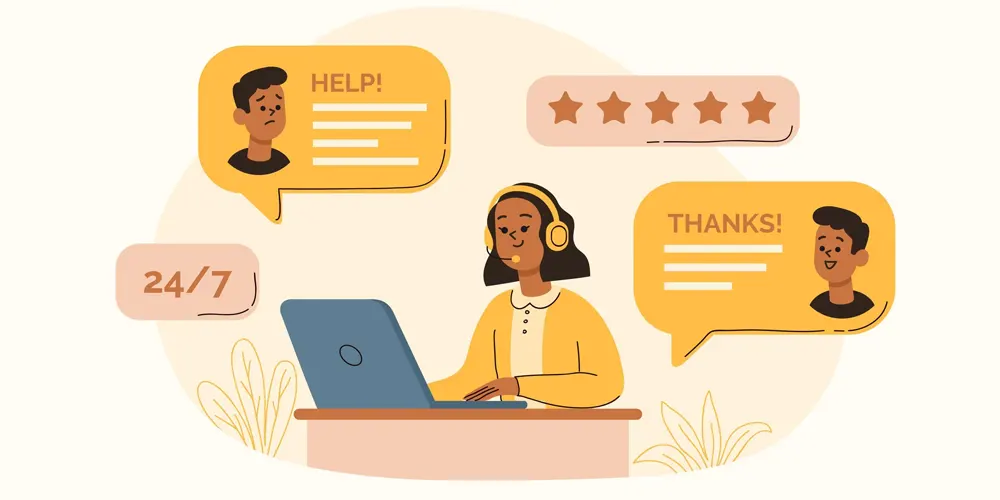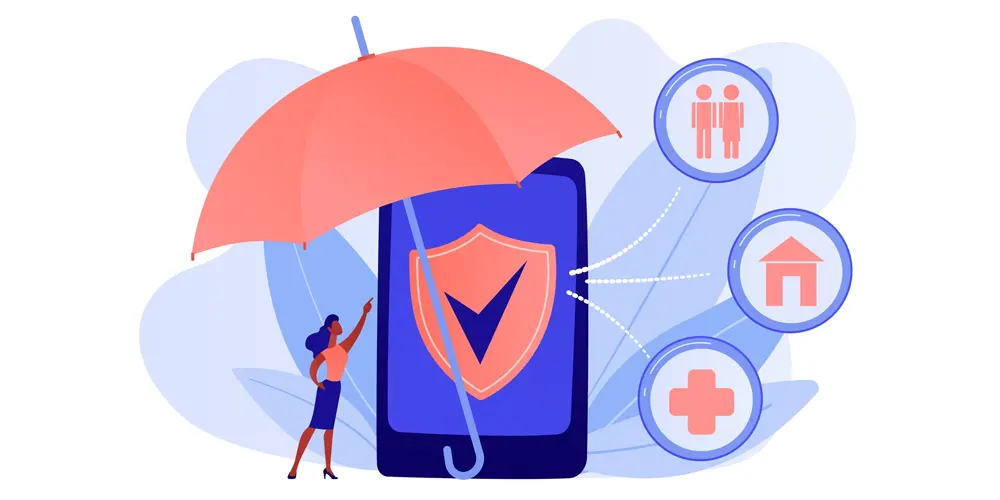How Using Web Phones Can Benefit These 10 Industries?
Our world has become interconnected and fast-paced. People no longer want to wait for things to happen and their priority of convenience is high.
Amidst all these changes, one technology that is facilitating all of this is web phones. These devices have revolutionized the way we work, communicate, and conduct business across various industries.
Web phones have become an indispensable piece of technology for businesses and their customers alike. From healthcare to education, finance to retail, marketing to insurance, and the legal sector and more, web phones are transforming the way these industries operate.
When it comes to benefits and capabilities, web phones have a lot on offer. In this blog, we will explore 10 industries that are benefiting from web phones. We will dive deep and understand the ways in which this technology is positively impacting their operations.
So, join me as we delve into the world of web phones. Let’s discover how this game-changing technology is revolutionizing the way we do business and communicate.
1. Healthcare

The importance of communication in the healthcare industry was highlighted during the Covid pandemic. A wide use of web phones was made during these times but their usage is still not wide enough.
Web phones provide an efficient and effective way to communicate with patients, healthcare professionals, and other stakeholders.
One of the most significant benefits of web phones in healthcare is the ability to connect patients with healthcare providers from anywhere, at any time. This is especially useful for patients who live in rural or remote areas.
With web phones, patients can receive medical advice and support remotely. Thus, reducing the need for travel and saving time and money.
Web phones can also facilitate telemedicine. Healthcare providers can now diagnose and treat patients remotely. This can be particularly useful for patients with chronic conditions or disabilities.
By using web phones to communicate with their healthcare providers, these patients can receive the care they need without leaving their homes.
In addition, web phones can improve collaboration between healthcare professionals. With web phones, they can communicate and share information more easily.
This can be especially important in complex cases where multiple specialists may need to work together.
Furthermore, web phones can help healthcare organizations reduce costs and streamline their operations. Web phones eliminate the need for expensive phone systems.
They also reduce the time and resources needed for administrative tasks such as scheduling appointments and following up with patients.
2. Education

Improvements in technology led to the rise of distance learning in the 2010s. We had web phones enabling remote education offering benefits to students, teachers and educational institutions alike.
Web phones in education provide flexible and accessible learning opportunities to students. With web phones, students can access educational resources and communicate with their teachers from anywhere.
Web phones can also enhance the quality of education by providing interactive and engaging learning experiences. For example, teachers can use web phones to incorporate multimedia elements into their lessons.
These may include videos, images, and interactive quizzes, making the learning process more exciting and effective.
Web phones can also improve collaboration between teachers and students, as well as between students themselves. Thus, students can work together on projects and assignments, exchange ideas, and provide feedback to one another.
Furthermore, web phones can help educational institutions reduce costs and streamline their operations. Administrative tasks such as scheduling and record-keeping can also be easily automated using web phones.
3. Finance

The world of Finance is no stranger to leading-edge technologies. They’re usually the first ones to get the good technologies and web phones are no exception.
Communication is an important operation in Finance. Without proper communications, deals worth billions might never go through.
One of the most significant benefits of web phones in finance is the ability to provide more personalized and convenient services to clients.
With web phones, clients can access financial advice and support from anywhere, at any time. Thus, it becomes easier for them to manage their finances on the go.
Web phones can also enhance the security of financial transactions and communications. Web phones offer superior encryption and authentication features.
This ensures that sensitive financial information is protected and that transactions are secure. Thus, reducing the risk of fraud and unauthorized access.
Furthermore, web phones can help financial institutions reduce costs and streamline their operations. Auto Attendants and IVRs can manage routing and appointment scheduling easily.
Web phones can also improve collaboration between financial institutions and their clients. This is achieved by allowing them to communicate more easily and share information more effectively.
It can be especially useful for clients who need to access multiple financial services and products. All of this is possible as web phones allow them to have a more integrated and holistic view of their finances.
4. Customer Support / Service

The Customer Support / Service Industry and phone-based communication are inseparable. Web phones have been a necessary and revolutionary update to this industry. Web phones offer a range of benefits to both customers and service providers.
A significant one of these benefits of web phones in customer service is the ability to provide more personalized and convenient support to customers.
With web phones, customers can access customer service and support from anywhere and at any time. Web phones make it easier for them to get the help they need when they need it.
Web phones can also enhance the quality of customer service by providing more efficient and effective communication channels.
For example, customer service representatives can use web phones to respond to customer queries and complaints in real time. Providing prompt response and problem resolution improves customer experience tremendously.
Furthermore, as usual, web phones help customer service organizations reduce costs and streamline their operations. Administrative tasks such as scheduling and tracking customer support interactions can be easily automated using web phones.
Web phones can also improve collaboration between customer service representatives and customers. Web phones allow them to communicate more easily and share information more effectively.
This can be especially useful for customers who have complex issues that require multiple interactions with customer service representatives.
5. Retail

Ask any salesman and they will tell you, it takes good communication between the retailer and customer to make a sale happen. Web phones can ensure the quality of communication is excellent between retailers and their customers.
Web phones in the retail sector can be used to provide more personalized and convenient shopping experiences to customers.
With web phones, customers can access shopping and customer support services from anywhere and at any time. Such enhanced convenience lets customers shop and seek assistance any time they need to.
Web phones can also enhance the customer experience by providing more efficient and effective communication channels. For example, retailers can use web phones to respond to customer inquiries and complaints in real time. This reduces the time and resources needed for resolving customer issues.
As clockwork, another recurring benefit that web phones offer is cost reduction and streamlining of operations. Automations allow for offloading many manual tasks such as scheduling and order tracking to web phones.
Web phones can also improve collaboration between retailers and customers. Thus, enabling them to communicate more easily and share information more effectively.
For example, customers can use web phones to access product information and reviews. They can also receive personalized product recommendations based on their shopping history.
6. Travel and Hospitality

After the slump in growth owing to the pandemic, the travel and hospitality industry is growing again. Reaching out to customers and coordinating various things about their vacation is an important task.
Web phones can simplify and enhance this entire process for both the vendors and their customers. Web phones can help businesses deliver more personalization and convenience to travellers.
With web phones, travellers can access any hospitality services they require at all times and from anywhere. This ease of travelling offered by web phones can boost tourism activities. Planning tours and vacations thus become easy.
Web phones can also enhance the customer experience by providing more efficient and effective communication channels.
For example, hospitality providers can use web phones to respond to customer inquiries and complaints in real time. This way they can help customers book tours and hotels quickly while providing virtual room tours via web phones.
Cost reductions that web phones enable have to be accounted for as well. Moreover, catering to the needs and questions of international travellers becomes more economical.
Travellers and guests can also use web phones to confirm their reservations and bookings. Viewing local attractions and planning for those becomes a breeze.
Web phones can also improve collaboration between hospitality providers and travellers. Effective and easy communication means a happy holiday for travellers.
For example, travellers can use web phones to access information about their reservations and to receive personalized recommendations for local attractions and activities.
7. Marketing

To be honest, telemarketing has built up a negative reputation over the recent years. There’s been too many scams happening but thankfully, the FCC has mandated STIR/SHAKEN and RMD to tackle this issue.
Such measures will help not only the marketers but also keep the consumers safe. With that said, web phones can prove to be a turning point in this fight.
Web phones adhere to all the FCC regulations so marketers can reach their potential customers. Add in the ability to personalize marketing messages and a more targeted approach and you have a winning combination.
Enabling all of these amazing things is AI and data analysis. These features allow web phones to craft personalized messages based on consumers’ location, preference and interaction history.
Web phones can also enhance the customer experience by providing more efficient and effective communication channels.
For example, marketers can use web phones to engage with customers in real time. They can present product catalogues and give live demos to the customers. Thus, generating interest and handling inquiries becomes easy.
Cost reduction makes another appearance here similar to Bruce Willis in the Die Hard series. Thus, you can run marketing campaigns that now cost less and yield higher results, all thanks to web phones.
Web phones can also improve collaboration between marketers and consumers. Web phones allow for greater interaction and enhance communication further.
For example, consumers can use web phones to provide feedback on products and services. They may also opt in or out of receiving personalized recommendations based on their interests and preferences.
8. Government and Nonprofits

Ah! Two sectors that I wish could deliver a more positive impact on our world. Well, maybe effective communication using web phones might help them achieve this.
At least when it comes to communication, web phones can help governments and nonprofits to offer a wide range of benefits to both public institutions and citizens. The biggest advantage of web phones is all the capabilities it allows.
Public services such as online registrations, information requests, permits, etc. can be easily delivered via web phones. Officials can also assist citizens remotely using a web phone. This means citizens no longer need to visit government offices.
Public notices and alerts can also be broadcasted easily using a web phone. This would allow governments to ensure that citizens are informed about all the important things.
Moreover, the interactive interactions enabled by web phones let governments collect important feedback directly from their subjects.
Nonprofits can use web phones as a highly effective and low-cost medium for public outreach. This would allow nonprofits to promote their cause while not having to spend a big proportion of their funds on it.
Web phones would also make it easy for nonprofits to collaborate with their volunteers and other nonprofits for various welfare campaigns. Accepting donations and recording all such transactions can be automated using web phones.
Progress on various initiatives can also be conveyed to all the donors and stakeholders of a nonprofit using a web phone. This transparency will help us be sure that our donations are being put to good use.
9. Insurance

Here we have another boring but necessary industry. The common man finds it hard to understand insurance and all the fine print. Web phones can help change this and allow more people to secure aspects of their life with good insurance.
This will benefit everyone, the insurance provider and the policyholders alike. Web phones allow insurance providers to better inform potential customers about certain policies and how they work.
People can call in and get information about different policies in any form that suits their needs. A lot of information can be shared using the interactive interactions made possible by web phones.
Providers can gather data from customers in real-time and offer them a customized policy as per their needs. Documents and other required information to get a policy can also be uploaded via a web phone directly to the provider.
Moreover, policyholders can also be allowed to manage their policies using a portal deployed via a web phone. Centralizing all such capabilities provide a simple and rich customer experience.
Policyholders can also file claims and be updated with their claim statuses using a web phone. They can also provide evidence for the losses incurred in the form of photos and videos and upload them directly via web phone.
This drastically reduces the time needed to process the claim and fast-tracks the process of insurance reimbursements.
10. Legal

Effective communication between lawyers and clients is crucial for this industry. Stakes can be high when it comes to lawsuits and managing clients can become difficult.
A good benefit of web phones in the legal sector is the ability to provide more efficient and effective services to clients. With web phones clients can access legal information, communicate with their lawyers, and receive updates on their cases in real-time. This can reduce the need for clients to visit law offices physically, saving time and money.
Web phones can also enhance the communication channels between lawyers and clients. For example, lawyers can use web phones to communicate with clients in real time, providing them with legal advice, answering their questions, and responding to their inquiries and concerns.
Furthermore, web phones can help lawyers reduce costs and streamline their operations by automating administrative tasks. For example, web phones can be used to manage client billing and invoicing, reducing the need for manual data entry.
Web phones can also improve collaboration between lawyers and clients. For example, clients can use web phones to share documents and evidence with their lawyers, reducing the time needed to prepare for a case.
Ending Notes
In conclusion, web phones have revolutionized the way we work, communicate, and conduct business across various industries.
From the healthcare sector to legal services and everything in between, web phones are transforming the way these industries operate. They are providing more efficient and effective ways of doing business.
Customer experience expectations are rising and web phones have stepped in to meet those. Be it ease of doing or managing things or communicating seamlessly, web phones are capable of it all.
























































































































